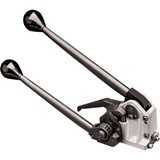Or a combination of both.
Retail trade was the headline economic report released on Monday.
It showed a rise of just 0.2 per cent in December from November, seasonally adjusted.
After a sizeable fall in October, a modest increase in November and the smaller December increase left the level of sales still below numbers recorded in August, September and October.
In part, that could be the result of stagnating prices.
The monthly figures are not adjusted for inflation but the quarterly figures indicate a slight, 0.1 per cent, fall in prices in the December quarter.
Even so, the real-terms measure of retail turnover fell by 0.3 per cent in the quarter after a rise of 0.5 per cent in the three months ending September.
There is no getting away from the fact that retail spending slowed in the latter months of 2010.
Also on Monday the ANZ's monthly survey showed growth in the number of jobs ads, on the internet and in major capital city newspapers, continued to slow.
At 1.3 per cent per month in January, the trend measure of the number of ads is still rising but, at barely a third of the 3.6 per cent growth rate a year earlier, the long slowdown is clear.
The Australian Industry Group - Housing Industry Association survey on Monday showed the construction sector in decline for the eighth month in a row.
The survey showed employment in the sector contracting at its fastest pace since March 2009.
The Dun & Bradstreet survey of business executives in the manufacturing, retail and wholesale sector was more equivocal.
It showed a marginally faster rise in expected employment levels but slower actual and expected growth in capital investment, sales and profits.
The picture to emerge from the economy on Monday was one of weakness in most parts of the economy, albeit slower growth rather than out-and-out contraction.
It is tempting to put it all down to the withdrawal of the fiscal stimulus that cushioned the blow of the global financial crisis in 2008 and 2009 and to the impact - including the upward pressure on the exchange rate - of monetary policy being restored to normal through rate rises.
But the weather has probably played a significant part, with the September-December period at, or near, historic levels of rainfall in most states.
The dismal weather has continued, with floods in Queensland, Cyclone Yasi, flooding, flash floods and storms in Victoria, Sydney's record-breaking heat wave and bushfires around Perth.
These "events", as they are now commonly known, will affect consumer and business behaviour, increasing activity at times but depressing it more markedly at others.
Only time will tell whether the economy stays on the ropes as the year wears on or bounces back full of fight.
At the very least it should not be assumed that all the damage has been done by higher interest rates, reduced government spending or the soaring exchange rate.









-160x160-state_article-rel-cat.jpg)



-160x160-state_article-rel-cat.png)

-160x160-state_article-rel-cat.png)




-160x160-state_article-rel-cat.png)


